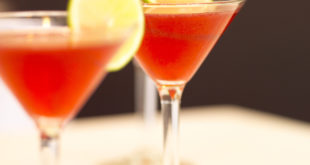I was talking with my friend Jason today, and showed him a website for a new housing development in our area. Â The development’s target audience is the young-professional millennial, and the website tried a bit too hard–it referenced trends and used the word “artisanal” to describe the nearby shops at least a half-dozen times.
That’s when Jason gave me the news.  “Artisanal ice cubes” are a real trend right now.
That is, people are paying extra money for ice cubes that are created in a special, usually hand-crafted manner.
Now, I’ve had special whiskey ice cubes before (the large ones that don’t melt as fast), but this goes a step further.
Now, bartenders across the land are staking their claim on ice, creating fancified cocktails where the frozen stuff takes a front seat.
“If you’re talking premium liquor, you expect premium glass and ice too,†says Andrew Bohrer, a longtime Seattle bartender and co-founder of the Washington State Bartender’s Guild.
This thirst for “premium ice†has resulted in a boom in boutique ice delivery services and specialized gear like the greaseless chainsaws and Japanese hand saws used to carve block ice. Of course, all of this specialized machinery and hands-on ice craft comes at a cost, and that’s where you, the customer, comes in
That article also highlights some frustration customers have with artisanal ice. Â Primarily, how long it takes to get your drink because of it. Â (One customer started ordering his drinks “neat” to avoid the ice-capades).
What’s cooler than being cool is indeed ice cold. Specifically, it’s stored at minus-2 degrees, sculpted with a Japanese band saw, and retails for $1 a cube.
Yes, artisanal ice is now a thing. In hipster meccas from Portland to Williamsburg, bars are serving up their drinks on extra-dense, extra-clear cubes, produced through a laborious process of freezing and carving. Cocktail connoisseurs swear the difference in flavor is worth the extra effort.
Cohen (the author of the article) has issues with the environmental impact of this type of ice (storage, shipping, etc–thus the title), but her article also points out just how much work goes into each ice cube.
In DC, a restaurant (recently closed due to maintenance issues) was charging $1 upcharge for the ice cubes. Â Due to the complex nature of these ice cubes, they were not making a profit off of them. Â In fact, they considered the $1 ice cubes “a loss leader”.
I’m all for a good drink, but this seems a bit far.  If I involve fancy ice cubes in my drinks, I’d rather the ice cubes themselves be the drinks.  For example, I’ve heard of bartenders making a gin & tonic ice cube before.  That’s pretty cool.
What do you think of this trend?
 Le Chic Geek
Le Chic Geek





not sure how new it is, or maybe it is spreading further. the rougher, jagged edges of the designer too are to be more porous, so they may cool more quickly; and presumably it is harder ice, less air in it, so it melts slower. i can’t say i’m a fan; not sure i’d pay the extra if charged. i understand most wholesale liquor distributors sell it in bags, frozen locally, not brought in from japan or the antarctic.
The only time “fancy ice” makes sense is if you’re pouring yourself a whisky you should use rocks or, in desperation, an ice ball.
I make my own “artisanal” ice cubes at home and it’s really not much work at all. You only need to a small cooler, remove the lid, fill it with water, and freeze. After a day or two, you will be left with a block of clear ice, and cruddy water at the bottom. This is because the water/ice is only cooled from the top (thanks to the missing lid) and the impurities get pushed towards the bottom as the ice freezes downwards. Hand-cutting can be done easily with a cheap bread knife if you do it as the ice is melting.
The procedure is discussed in greater detail in the book Liquid Intelligence by Dave Arnold. The book goes over any detail you need to know about for making a perfect cocktail (including ice).